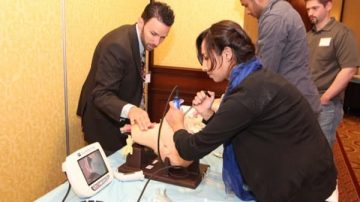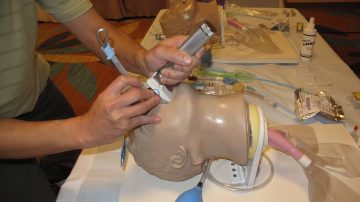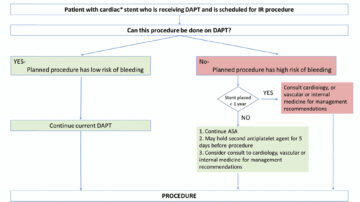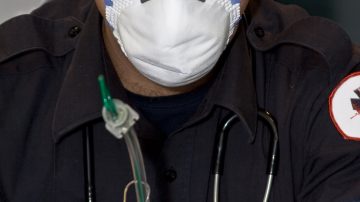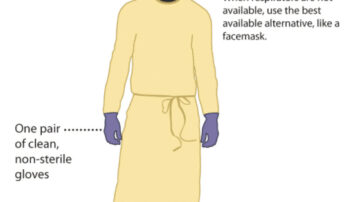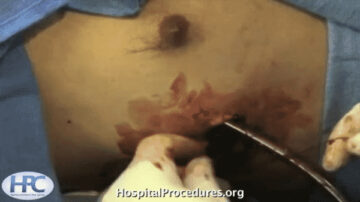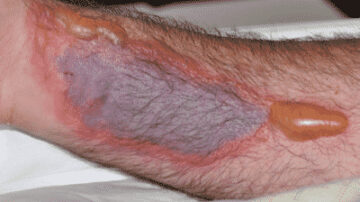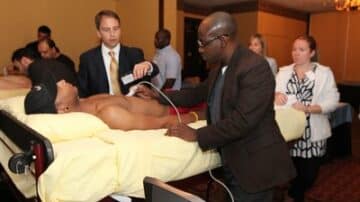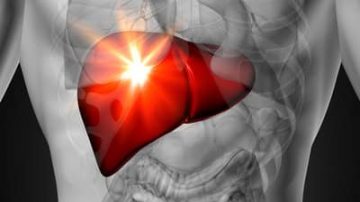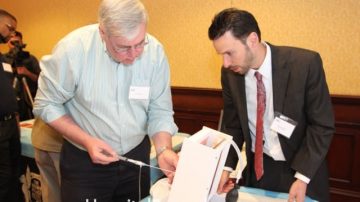In 2015 a meta-analysis found that when an ultrasound was used during a radial arterial catheter placement the first pass success rate improved. In the eleven trials that met inclusion criteria over 800 patients were enrolled. Compared to the palpation-guided…
Read MoreA recent article summarizes a cross-sectional survey aimed at determining the processes in place to assess the procedural competency of academic emergency medicine attendings.[i] The survey was sent to the 39 ACGME-accredited Emergency Medicine programs in the U.S. and had…
Read MoreMore Articles – Cardiovascular diseases, Central line, Endotracheal Intubation, Featured Procedure, Gastrointestinal diseases, Glidescope Intubation, King Tube, Laryngeal Mask Airway, Lumbar Puncture, Mechanical Ventilation, Medical General, medical procedures, Paracentesis, Respiratory diseases, Thoracentesis
Simulation-based procedural training has been shown to improve procedural competence, safety, operator confidence and most importantly patient safety for every bedside procedure studied. Now, a new systematic review and meta-analysis confirms that simulation-based training in airway management improves procedural competence…
Read MoreThis blog summarizes the 2019 Society of Interventional Radiology (SIR) for Periprocedural Management of Image-guided Procedures with regards to thrombocytopenia, coagulopathies, antiplatelets and anticoagulation. The SIR guidelines are summarized as follows: Anticoagulation with heparin, LMWH, fondaparinux, argatroban, warfarin, DOAC, clopidogrel, ticagrelor…
Read MoreThe SARS-COV-2 pandemic started in January 2020 and has decimated the majority of U.S. hospitals for the past 18 months. The impact of COVID-19 has not only affected available hospital beds, but has limited the ability of hospitals to perform…
Read MoreA number of additional factors must be considered with airway management in COVID-positive patients. Hospital Procedures Consultants (HPC) can provide simulation-based training to prepare providers for airway management in COVID-positive patients. The first essential consideration is to place the patient into a…
Read MoreMore Articles – Cardiovascular diseases, Central line, Chest Tube, Endotracheal Intubation, Featured, Hematology, medical procedures, Thoracentesis
Traditionally, it was felt that the INR had to be less than 1.5 and platelets had to be at least 50,000/µL to perform most bedside procedures. With more clinical evidence, we now know that low-risk bedside procedures can be performed…
Read MoreMore Articles – Cardiovascular diseases, Central line, Chest Tube, Featured, Infections, King Tube, medical procedures, Respiratory diseases, Thoracentesis
More Tags – chest tube, empyema, featured, HPC updates, parapneumonic effusion, pleural effusion, thoracentesis, tube thoracostomy
Complicated parapneumonic effusions frequently represent pleural space infections. Approximately 1 in 7 cases of pneumonia have an associated parapneumonic effusion (PPE) on chest x-ray. Most of these effusions are small and usually resolve spontaneously with prompt antibiotic administration. However, moderate-to-large…
Read MoreIntraosseous line use has increased significantly since the advent of the battery powered intraosseous drill. In surveying providers at courses over the years, we have seen a steady rise in the number of providers with access to the intraosseous drill. …
Read MoreDoes Simulation Based Training Improve Central Line Success Rates? Simulation-based procedural training has become increasingly popular in academic medical centers and among medical trainees. Limited data has suggested that simulation based training improves success rates and safety, but evidence has…
Read MorePeripheral vasopressor infusions are generally safe at low-moderate doses and for short durations, but you must watch the patient carefully for extravasation that can cause serious tissue injury. Traditionally, central lines were placed for administration of vasopressor infusions at any rate. We…
Read MoreMore Articles – Central line, Chest Tube, Emergency Procedures, Featured, Glidescope Intubation, Lumbar Puncture, Paracentesis, Thoracentesis
Medical procedural education in the era of COVID19 is still best conducted via HANDS-ON simulation-based procedural training. Procedural skills can NOT be attained via remote education, but in-person training must be conducted safely. There are many topics and skills that can be successfully be taught online,…
Read MoreThis blog will offer some expert recommendations to help guide the safety of hospital procedures at different platelet and coagulation profiles. Unfortunately, there are no strong evidence-based guidelines for hospital procedures dedicated to the study of patients with decompensated cirrhosis.…
Read MoreA historical myth in procedural medicine is the operator should limit removal of pleural fluid to 1.5 L during thoracentesis because of the risk of re-expansion pulmonary edema or pneumothorax. New evidence supports safety of large volume thoracentesis until no…
Read MoreBased on several studies, central line malposition occurs between 3.3-6.7% of the time.1 The historical recommendation is that malpositioned central lines should not be used for long periods of time, if at all. The basis for these recommendations is based…
Read MoreCategories
- ACLS (1)
- Arterial line (33)
- Cardiovascular diseases (77)
- Central line (55)
- Chest Tube (39)
- Dermatology (4)
- Emergency Procedures (139)
- Endocrinology (6)
- Endotracheal Intubation (36)
- Events (24)
- FAST Exam (12)
- Featured (113)
- Featured Procedure (42)
- Gastrointestinal diseases (32)
- Ginecology (3)
- Glidescope Intubation (21)
- Hematology (33)
- Hospital Procedures (85)
- Infections (32)
- Intraosseous line (8)
- King Tube (27)
- Laryngeal Mask Airway (18)
- Lumbar Puncture (36)
- Mechanical Ventilation (34)
- Medical General (95)
- medical procedures (258)
- Needle Decompression (6)
- Nephrology (11)
- Neurological diseases (12)
- Oncology (4)
- Paracentesis (32)
- Pericardiocentesis (3)
- Procedural Sedation (19)
- Respiratory diseases (85)
- RUSH Exam (8)
- Thoracentesis (37)
- Traumatology (24)
- Travel (27)
- Ultrasound-Guided Peripheral IV (13)

